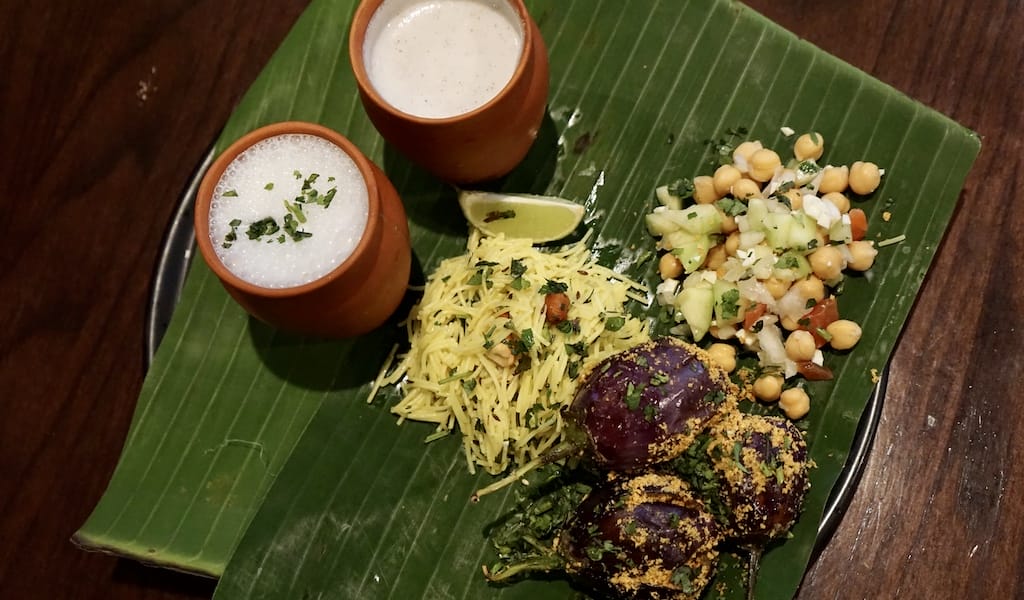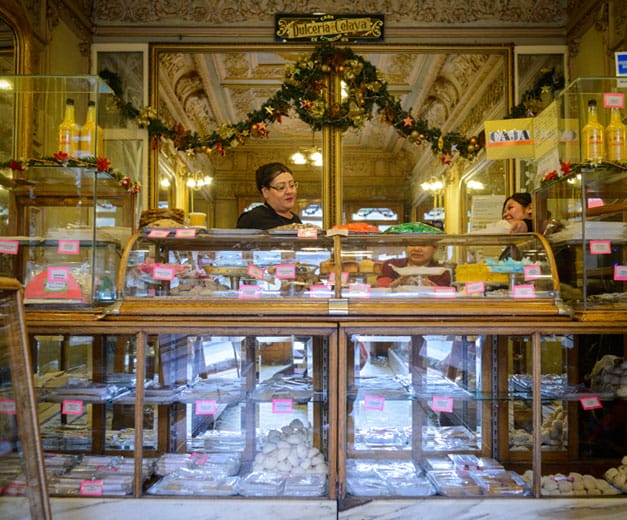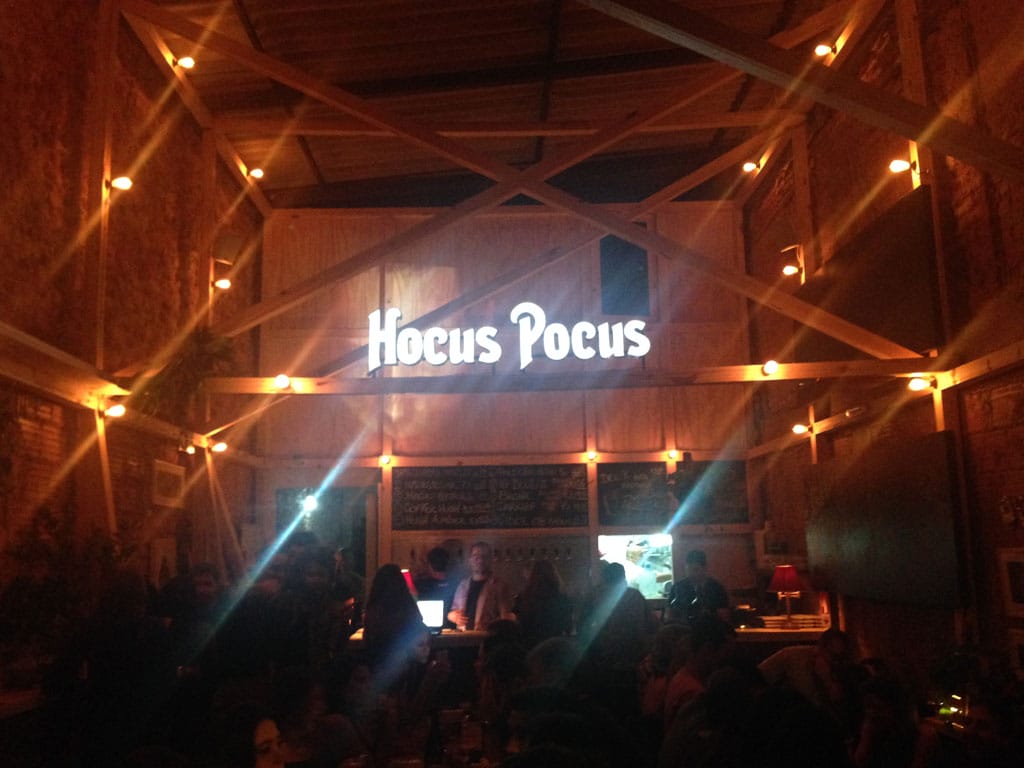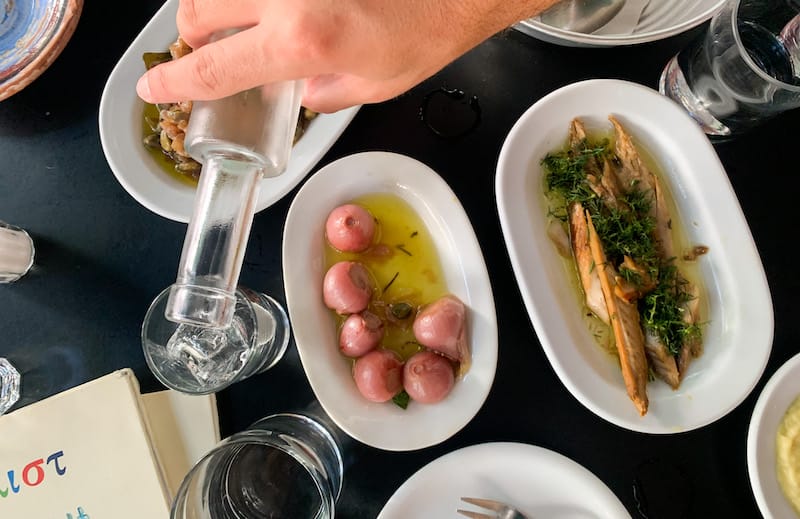Perusing the menus of most Indian restaurants in Los Angeles, one may forget that India is the seventh-largest country in the world, with over 30 states and union territories. A limited handful of the same recipes – chicken tikka masala, tandoori, naan – repeat themselves time and time again. These are the dishes most commonly found on Indian restaurants’ menus across the U.S., including Los Angeles, and they all hail from North India.
Sridhar Sambangi is looking to change this at Banana Leaf, which serves regional specialties from South India. Sambangi spent more than 30 years working in technology startups, which included a cloud-based food ordering service for restaurants. Food has always been his passion, though, and he finally took the leap to start his own restaurant with Banana Leaf. He opened its first location in Culver City in 2021, taking over the space where a friend’s restaurant was shuttering.

Sambangi thinks one of the main reasons North Indian food dominates the restaurants in the U.S. is because compared to the food of South India, the food of North India tends to use more dairy. “North Indian food has more cream bases like butter; South Indian is more onion and tomato base,” he explains. The dairy tends to temper the spices of Indian food, making it more approachable for the Western palate.
He prepared us a bowl of kurma as an example. Kurma, or korma, is a dish that is popular throughout India and contains braised meat or vegetables with a thick sauce. North Indian korma, however, is a creamier dish as it is made using yogurt as the base for the sauce. South Indian kurma is lighter and uses coconut, peanuts and sesame seeds.
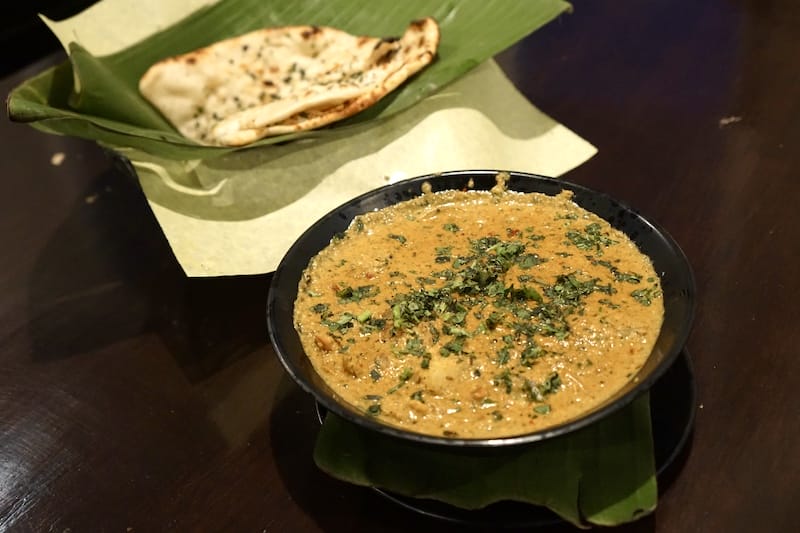
Sambangi is originally from Andhra Pradesh, a coastal state in the Southeast of India. Though the states and territories in India have changed quite a few times over the years, Andhra Pradesh is significant as the home to the Telugu people, who also predominantly reside in neighboring Telangana. One of the most popular dishes in this area is the Hyderabadi dum biryani.
Biryani is the most-ordered dish from Indian restaurants all over Los Angeles, and Sambangi has a good source for this information – one of the startups he’s involved in is an online ordering platform that is used by many Indian restaurants in town. We also saw this firsthand during our visit to Banana Leaf. Takeout boxes of biryanis lined the kitchen pass as dinner time rolled around.
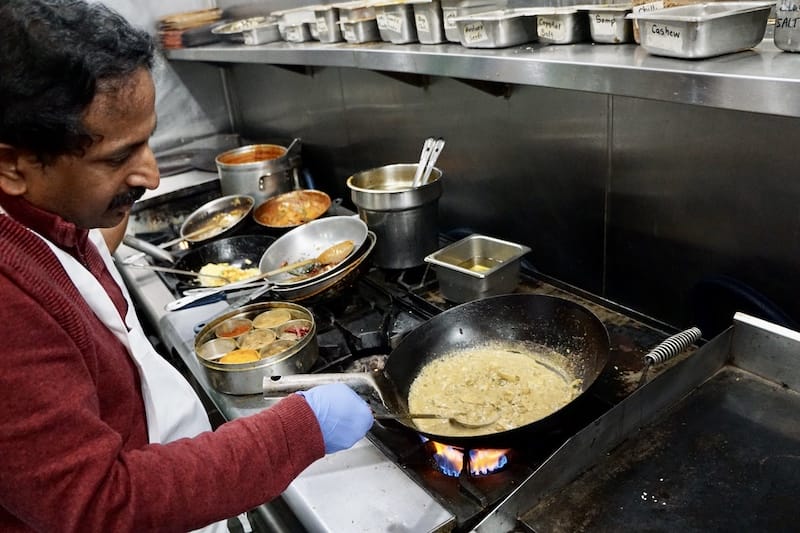
Biryani may be popular everywhere, but Hyderabadi dum biryani is special. The word “dum” means to simmer, and it refers to the slow-cooking method of this biryani that Hyderabad is known for. In dum biryani, the meats are typically marinated for 24 hours, then the meat and the rice are cooked together slowly, which usually takes 25-50 minutes, depending on the meat or vegetable. Banana Leaf’s original location in Culver City offers 21 different biryanis (some of them rotate throughout the week), including chicken dum biryani, goat dum biryani, fish and vegetarian options.
Other South Indian specialties on Banana Leaf’s menu include Chicken 65, a lightly battered and deep-fried chicken that originated in the city of Chennai. This dish was invented at Hotel Buhari in Chennai, though there is still some debate about the origin of the name. Some say it’s because it contains 65 different spices, and some say that it was because it was introduced in 1965.
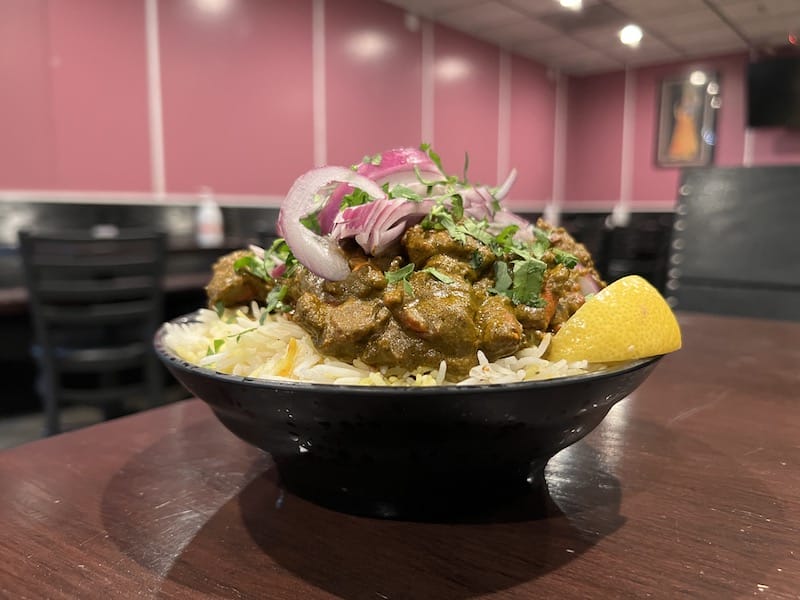
Some of Banana Leaf’s dishes are not found on other Indian restaurant menus across L.A. For example, there’s chicken curry made with gongura, or sorrel leaves. Gongura curry is a unique dish as the gongura gives the dish a bit of a tangy flavor. Sambangi had to search for an importer who could supply him with fresh leaves from India in order to put this dish on his menu. Banana Leaf also serves this Andhra specialty as a biryani, with the gongura chicken curry piled on top of basmati rice.
Sambangi speaks enthusiastically about the various South Indian specialties at Banana Leaf. South Indian food is known to be very spicy, but “every region has a lot of options that are not spicy,” he explained. To showcase this, he prepared a plate composed of semiya upma (a mild vermicelli and peanut dish that is popular for breakfast in South India), small eggplants stuffed with masala, and a salad of cucumbers and chickpeas. He served it all with a glass of salted lassi and ragi malt. Sambangi said ragi malt is typically drunk for breakfast in India as it’s rich in protein and gives people energy to work through the day. Just as promised, nothing on this plate is spicy at all.
Unlike the long, large eggplants we are used to in the U.S., Indian eggplants are small and round, ideal for stuffing with spices. In another dish called eggplant pakora fry, Sambangi sautees these eggplants with onions and coriander, and serves them with pakora, fried pieces of batter made with gram (chickpea) flour.

These examples are just the tip of the iceberg of what Banana Leaf offers. Other Andhra specialties on the menu include avakaya, a pickle made from unripe mangoes, and various dishes made from tindora, or ivy gourd, which is commonly eaten in India. Sambangi’s goal is to promote regional items that are rarely, if ever introduced through commercial kitchens in the U.S. He is certainly well on his way with Banana Leaf – despite only opening in Culver City in 2021, he has since expanded with additional locations in downtown, Santa Monica, Redondo Beach, and Van Nuys.
In Los Angeles, diners have become more familiar with at least some regional differences in Chinese and Mexican cuisines. With Banana Leaf’s rapid expansion and new restaurants serving and properly labeling regional specialties, one can hope it’s only a matter of time that Angelenos become well versed in the regional cuisines of India as well.
 November 17, 2014 La Dulcería de Celaya
November 17, 2014 La Dulcería de Celaya
Editor's note: It's Sweets Week here at Culinary Backstreets, and to get things started, […] Posted in Mexico City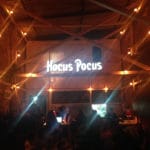 December 27, 2016 Hocus Pocus DNA
December 27, 2016 Hocus Pocus DNA
In Rio, only specialty beer bars usually have a touch of sophistication, and generally, […] Posted in Rio June 13, 2022 To Hohlidaki
June 13, 2022 To Hohlidaki
Even though Athens is fairly close to the sea, there are times when we crave a quick […] Posted in Athens
Published on May 12, 2023
Related stories
November 17, 2014
Mexico CityEditor's note: It's Sweets Week here at Culinary Backstreets, and to get things started, our Mexico City correspondent introduces us to one of the city's legendary sweets shops, where every single candy and cookie is made in-house. Mexican sweets might not be as world-famous as those from the U.S., France or Switzerland, but judging by…
Learn to quaff like a carioca on our gastropub crawl!
December 27, 2016
RioIn Rio, only specialty beer bars usually have a touch of sophistication, and generally, the beer there is much more expensive (mainly because of the high tariff on imported hops), the regulars are more demanding and the food is made by a “chef.” This in contrast to the humble botequim, the traditional family-run bars that…
June 13, 2022
Athens | By Katherine Whittaker
AthensEven though Athens is fairly close to the sea, there are times when we crave a quick island getaway – to taste the best tomato salads of the Cyclades, or one of the many pungent cheeses of Naxos, or real smoked apaki from Crete, but we don’t have the time (or resources) to venture out…







































